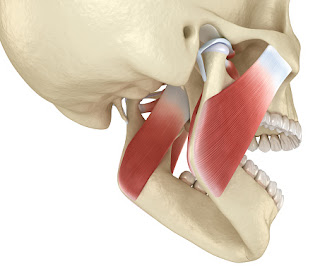TMJ Disorder Diagnosis
TMJ disorders occur when something goes wrong with your jaw joints and jaw muscles. Oftentimes, this happens because of a jaw injury, inflammation such as with arthritis, or overuse. You may not think about your temporomandibular joints (TMJ) much, but you use them a lot. The joints connect your jawbone to your skull. Your TMJ springs into action each time you talk, chew, and swallow.
Your doctor or dentist will discuss your symptoms and examine your jaw. He or she will probably:
Listen to and feel your jaw when you open and close your mouth
Observe the range of motion in your jaw
Press on areas around your jaw to identify sites of pain or discomfort
If your doctor or dentist suspects a problem, you may need:
Dental X-rays to examine your teeth and jaw
CT scan to provide detailed images of the bones involved in the joint
MRI to reveal problems with the joint's disk or surrounding soft tissue
TMJ arthroscopy is sometimes used in the diagnosis of a TMJ disorder. During TMJ arthroscopy, your doctor inserts a small thin tube (cannula) into the joint space, and a small camera (arthroscope) is then inserted to view the area and to help determine a diagnosis.
It’s unclear exactly how TMJ exercises may relieve chronic TMJ pain. They’re thought to help:
strengthen jaw muscles
stretch the jaw
relax the jaw
increase jaw mobility
reduce jaw clicking
promote jaw healing
According to one 2010 study published in the Journal of Dental Research, performing TMJ exercises increases mouth opening range more than using a mouth guard in people with TMJ disc displacement.
These nine exercises from the American Academy of Family Physicians and the Royal Surrey County Hospital may help relieve TMJ pain and improve the movement of your jaw joints. For some exercises, there are frequency recommendations. For exercises where frequency recommendations aren’t available, ask your doctor or dentist for guidance.




Comments
Post a Comment